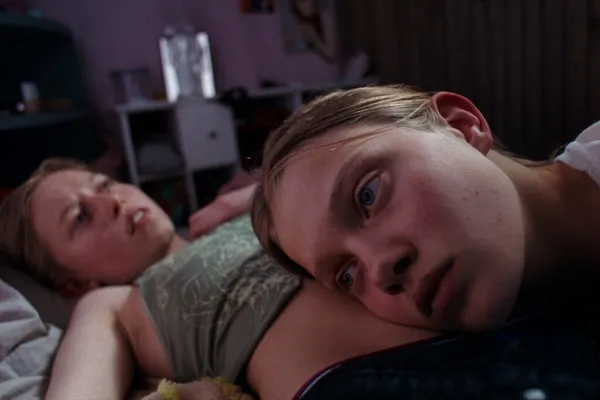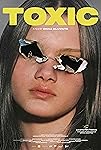Eye For Film >> Movies >> Toxic (2024) Film Review
Toxic
Reviewed by: Andy Stoeva

“Teen-age fashion doll! A real grown-up fashion model! Everything is real!”*
This Barbie is a model.

She has long blonde hair and distinguishable pace. A comb. Fashionable jeans that might or might not be stolen from a friend. Removable high heels… that she cannot walk in. She is spectacular but normal. Suburban but cosmopolitan. Japan, Korea and Paris are lying in her feet.
She is Marija. She is Kristina. She is Gerda, she is Diana. She is outstanding and on sale, in case you have anything to offer in return – escape, for example.
Marija (Vesta Matulyte) achieves the impossible: you could argue that a model with a limp is like a violinist using only one arm to play a Bach concerto. But in Saule Bliuvaite’s captivating but devastating debut, the Lithuanian filmmaker mixes child’s play with adult activities by commenting on beauty standards and their clash with eastern European insecurities.
Marija and her former-enemy-turned-best-friend Kristina (Ieva Rupeikaite) are prepared to go to extremes for a spot at a modelling casting event, whether it costs swallowing parasite eggs, eating cotton or giving massages to elderly men to earn enough money for an overpriced photoshoot. When life is harsh there is no choice but to grow up faster and so do the characters. However, they leave the impression of a play of make-believe, creating an outrageous dissonance between braiding each other’s hair, shooting hoops in the alley and rehearsing their catwalk stroll on the way home in one instance; and smoking, drinking and trying drugs a second later.
There are some sequences not for the faint of heart – the imagery is almost dream-like, feverish and intense without straying away from reality. DOP Vytautas Katkus attributes to this effect with his prominent use of tight aspect ratio, long shots and symbolism reminiscent of 19th century artist Sir John Everett Millais’ painting Ophelia – a true visual feast as unsettling as Anthony Burgess’ A Clockwork Orange.
By showing 13-year-olds in adult settings, doing the unthinkable to ensure their position in society, Bliuvaite exposes the difference between how young men and women experience otherness in context of social expectations. While boys are usually excused from expressing their desires and emotions aggressively – and even encouraged to, teenage girls are swinging between the need to fit in and the fear of failing to do so.
Being an outsider is truly a spectrum and Bliuvaite has fun with experimenting with different characters whose flaws make them unique in various ways – be it a limp, a lisp or a personality trait. She strips all bodies from sex, turning them into indifferent subjects of external desire that transforms them into a target of exploitation.
By the end, we have obtained a whole collection of dolls that our friends from middle school would have been jealous for. Parading a palette of symbols of western culture (designer jeans, band merch and piercings) on the background of dirty toilets, factory chimneys and industrial buildings, these same dolls turn their back on individuality, sacrificing their self-respect and self-esteem in a reflection of society at its ugliest.
And wouldn’t it be so much better if we all just came out and played some basketball instead?
*Barbie doll ad, The Edmond Sun – December 25, 1962
Reviewed on: 16 Oct 2024
















